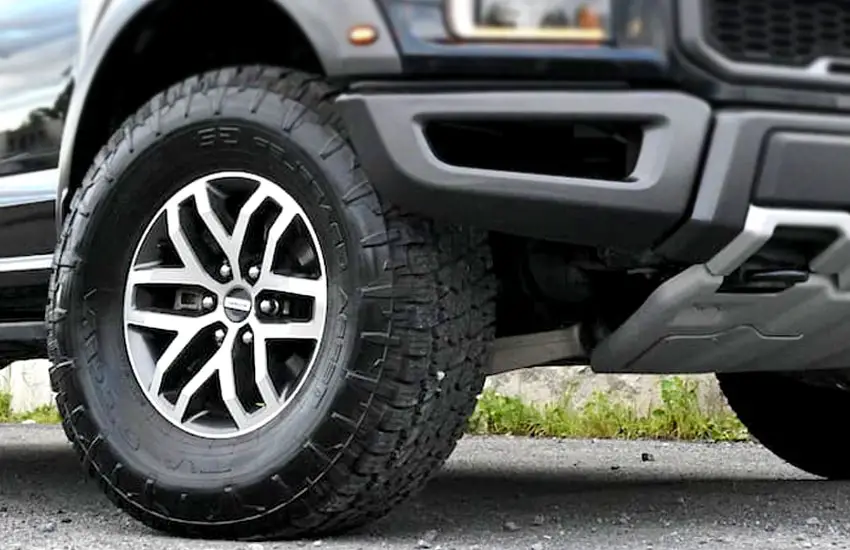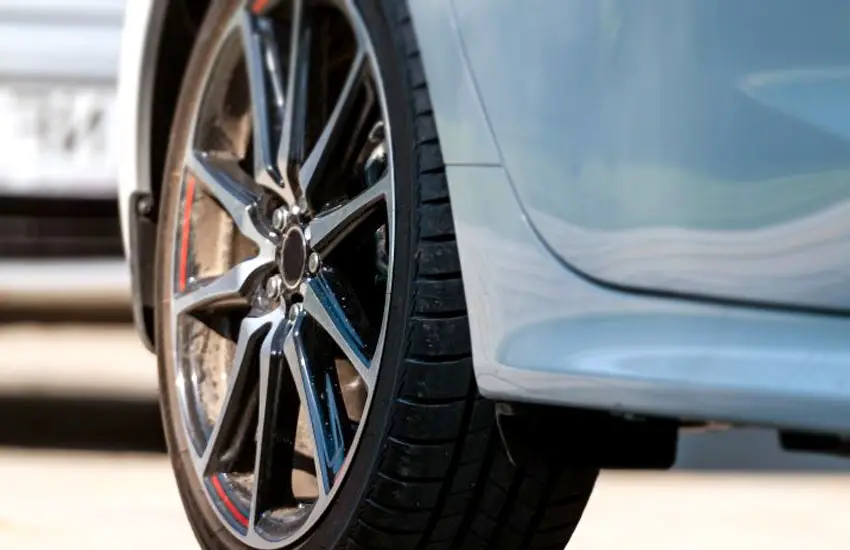As an Amazon Associate, I earn from qualifying purchases at no extra cost to you.
Are Dodge and Ford Wheels Interchangeable? Compatibility of Lugs and Rims Explained
When you’re out on the road, there’s a lot more to your car’s wheels than just spinning them! From lugs to rims, each detail plays a role in your vehicle's performance and safety. If you've ever wondered whether you can swap wheels between Dodge and Ford, you’re not alone. It's a question that many car owners have, especially when looking for ways to customize their rides or replace damaged parts. Well, buckle up because we’re about to dive into the world of wheel compatibility and figure out whether you can really mix and match Dodge and Ford wheels. Let's break it all down, step by step!

Understanding Wheel Compatibility Between Dodge and Ford
If you’re a car enthusiast (or even if you’re just getting started with car maintenance), the idea of swapping out wheels between different vehicle brands, like Dodge and Ford, can be an exciting thought. It sounds like a great way to save time and money, right? After all, a wheel is just a wheel, isn't it? Well, not quite. There's more to it than simply finding a set of wheels that look cool. The compatibility of wheels goes far beyond aesthetics and involves a range of factors like lug patterns, rim sizes, and offset measurements.
Now, I can almost hear you asking: “But are Dodge and Ford wheels really interchangeable?” It’s a valid question, and we're going to dive deep into it. In this article, we'll cover the nuts and bolts (pun intended) of wheel compatibility between Dodge and Ford, making sure to answer all your burning questions and clear up any confusion you might have.
Whether you’re driving a Ford F-150 or a Dodge Ram 1500, knowing how to pick compatible wheels is essential not just for aesthetics but for your safety as well. Stick with me, and we'll walk through everything from bolt patterns to lug nut compatibility, and everything in between. By the end of this post, you’ll be ready to make the best decision for your ride—whether it's swapping wheels between Dodge and Ford or opting for something that suits your style and needs.
The Basics of Wheel Compatibility: Lugs, Bolt Patterns, and Rim Sizes
To understand wheel compatibility, you first need to get familiar with some essential wheel terms—specifically lug patterns, rim sizes, and offsets. These might sound like a bunch of jargon, but trust me, once you get the hang of it, everything will fall into place. Let's break down the components involved in wheel compatibility.
Bolt Patterns and Lug Nut Compatibility
One of the first things to know when looking at wheel compatibility is the bolt pattern. A bolt pattern refers to the number of lug bolts (or lug nuts) on a wheel and the spacing between them. For example, if you've got a 5-lug pattern, that means there are five lug holes on the wheel, spaced evenly in a circle.
Dodge and Ford vehicles tend to use different bolt patterns, which is why it's important to know the exact pattern for each vehicle. If the bolt patterns don't match, then the wheels simply won't fit, regardless of how much you want them to. Dodge vehicles, such as the Ram 1500, typically use a 5×139.7mm bolt pattern, whereas Ford trucks, like the F-150, often use a 6x135mm pattern. Right off the bat, that's a big difference that makes swapping wheels between these two brands tricky.
It's important to understand that even though a wheel may physically fit over your vehicle’s hub, if the lug pattern doesn't match, the wheel won't securely attach to your vehicle. Using the wrong lug pattern could result in serious safety risks, including accidents caused by wheels coming loose while driving.
Rim Sizes and Offsets
Next up, let’s talk about rim sizes. Rim size refers to the diameter of the wheel—essentially how wide or narrow the wheel is. Different vehicles require different rim sizes depending on the size of the tire they need. For instance, a standard Ford truck might need a rim size between 16 to 20 inches, depending on the model and tire size, while Dodge models can have similar or slightly larger sizes.
Now, let's add another twist to the equation: the offset. The offset of a wheel determines how the wheel sits in relation to the vehicle’s suspension and the wheel well. If you've ever seen a truck with wheels that look too far out or tucked in, that's a result of a misaligned offset. Most vehicles require a specific offset to avoid rubbing against suspension components, tires, or fenders.
If you’re trying to swap wheels between Dodge and Ford, not only do you need to ensure the lug patterns match, but you also need to verify that the offset of the wheels is compatible with the vehicle. Otherwise, you might run into issues with your tires rubbing on your fenders or suspension parts, which can quickly become an expensive problem.
Key Differences in Dodge and Ford Wheel Specifications
Now that we've gone over the basics, let's dive deeper into some of the key differences between Dodge and Ford wheel specifications. While Dodge and Ford vehicles may seem similar in many respects, their wheel specs can vary quite a bit, even across different models within the same brand.
Dodge Wheel Specifications
For starters, Dodge vehicles typically use either a 5-lug or 6-lug bolt pattern, with the most common being the 5×139.7mm pattern on many of their trucks and SUVs. The Dodge Ram 1500, for example, uses this pattern. The center bore of Dodge wheels, which refers to the diameter of the hole in the center of the wheel, also plays a crucial role in compatibility. Dodge vehicles typically have a larger center bore compared to Ford vehicles.
Rim size on Dodge trucks often falls in the 17 to 20-inch range, with a wide variety of rim widths available, depending on the trim level. Dodge also uses different offsets depending on whether you're looking at standard or sport packages. The offset can have a noticeable effect on the wheel's fitment and its appearance, so it's essential to know the exact offset for your Dodge model.
Ford Wheel Specifications
On the flip side, Ford vehicles like the F-150 generally use a 6-lug bolt pattern (6x135mm) in contrast to the 5-lug pattern of many Dodge models. This makes swapping wheels between Ford and Dodge models a bit more challenging. Additionally, Ford vehicles often feature a smaller center bore compared to Dodge, which can complicate the installation of wheels from a different brand.
Rim size on Ford trucks also falls in the 16 to 20-inch range, similar to Dodge, but they may have different widths and backspacing depending on the specific model and year. Ford vehicles also tend to have a more standardized offset, but again, depending on the year and trim, the offset could differ.
Ultimately, the differences in lug patterns, center bores, and offsets mean that swapping wheels between Dodge and Ford is not a simple task. Even though both brands have a similar range of wheel sizes, these factors make it difficult to just swap wheels between the two without the risk of poor fitment or safety issues.
Can You Swap Dodge and Ford Wheels? Common Compatibility Issues
So, with all these differences in wheel specifications, can you actually swap Dodge and Ford wheels? The short answer is… it depends. Some wheels might physically fit, but that doesn't necessarily mean they're safe or functional on your vehicle. Let’s explore the common compatibility issues you may encounter when attempting to swap Dodge and Ford wheels.
Bolt Pattern Mismatch
As mentioned earlier, one of the most common issues when trying to swap wheels between Dodge and Ford is the difference in bolt patterns. The lug pattern mismatch means that even if the wheel physically fits onto your vehicle's hub, it won't be able to securely attach using the correct number of lugs. A wheel with a different lug pattern can cause vibrations, and more dangerously, the wheel could detach while you’re driving.
Center Bore and Hub Size Differences
Another issue is the center bore—the hole in the center of the wheel that fits over the vehicle's hub. If the center bore of a Dodge wheel is larger than that of a Ford, or vice versa, you might run into problems. In such cases, the wheel won't sit properly on the hub, and you'll experience poor wheel alignment or even vibrations while driving.
Offset and Backspacing
The offset of a wheel refers to how far the wheel sits from the hub. If the offset of the wheel is incorrect for your vehicle, you could experience problems with wheel clearance, especially when turning or driving over bumps. A misaligned offset could also cause your tires to rub against suspension components or your vehicle’s fenders. This is especially important when trying to fit wheels from different manufacturers.
How to Ensure Safe Wheel Interchangeability Between Dodge and Ford Vehicles
If you're determined to swap wheels between Dodge and Ford, there are ways to ensure compatibility, but it requires careful consideration and attention to detail. Here are a few steps you can take to ensure that the wheels you're choosing will safely fit your vehicle.
Step 1: Measure the Bolt Pattern
Before you even think about installing new wheels, the first thing you need to do is measure the bolt pattern of your vehicle. This involves counting the number of lugs and measuring the distance between them. If your Dodge has a 5×139.7mm bolt pattern and your Ford has a 6x135mm pattern, then swapping wheels between them is not possible without an adapter or other modifications.
Step 2: Check the Center Bore Size
The next step is to measure the center bore of the wheels you plan to swap. You can do this by measuring the diameter of the hole in the center of the wheel. If the center bore of your new wheels is larger or smaller than your vehicle's hub, you might need a hub centric ring to make the wheels fit properly.
Step 3: Match the Rim Size and Offset
Rim size and offset are also critical in ensuring proper fitment. Check the size of your current rims, and make sure the wheels you plan to use match in terms of diameter and width. Pay special attention to the offset, which will affect how the wheels sit relative to your suspension and fender. If you're unsure about the right offset, it's always best to consult with a professional before making any swaps.
Step 4: Consult with a Professional
If you're not sure about wheel compatibility, it's always a good idea to reach out to a professional mechanic or tire shop. They can help you identify any potential issues and recommend the best wheels for your Dodge or Ford. Having a professional assess the situation ensures that you won't waste time or money on incompatible parts.
Making the Right Decision for Your Vehicle’s Wheels
I hope by now you've got a clear understanding of the factors that affect wheel compatibility between Dodge and Ford vehicles. While it's not always easy to swap wheels between the two brands, it is possible under certain circumstances, as long as you pay attention to key factors like bolt patterns, rim sizes, and offsets. It's all about ensuring that your wheels fit safely and securely on your vehicle, so you don't run into issues down the road.
Ultimately, if you’re looking for a wheel swap, be sure to take the time to measure and check everything thoroughly. And if you’re ever in doubt, don't hesitate to seek expert advice. Whether you're customizing your truck or replacing worn-out wheels, a little research goes a long way in ensuring a safe and smooth ride.

Frequently Asked Questions
Is it safe to use a Ford wheel on a Dodge truck?
No, it’s not safe unless the bolt patterns, center bore, and offset match. Otherwise, the wheel may not fit properly.
Can I use Dodge rims on a Ford F-150?
It's unlikely because of the difference in bolt patterns (Dodge uses 5×139.7mm, and Ford uses 6x135mm). You'd need adapters.
Do I need adapters to fit Dodge wheels on a Ford?
Yes, you may need adapters to match the bolt pattern, but it's important to ensure they're safe and reliable.
Is it okay to swap wheels from different truck models?
You can swap wheels from different models within the same brand, but make sure the bolt patterns and rim sizes match.
Can I use different rim sizes on the same vehicle?
While you can use different rim sizes, it's essential to keep the same overall tire diameter to avoid problems with handling or clearance.
Do I need to adjust the suspension when swapping wheels?
If the new wheels have a different offset or diameter, you may need to adjust the suspension or fenders to prevent rubbing.
Is it possible to install wheels with a larger center bore?
It's possible, but you'll need hub centric rings to ensure the wheel sits properly on the vehicle's hub.
Can I fit aftermarket wheels on my Dodge or Ford?
Yes, as long as the aftermarket wheels meet the correct specifications for your vehicle, they should fit without issues.











